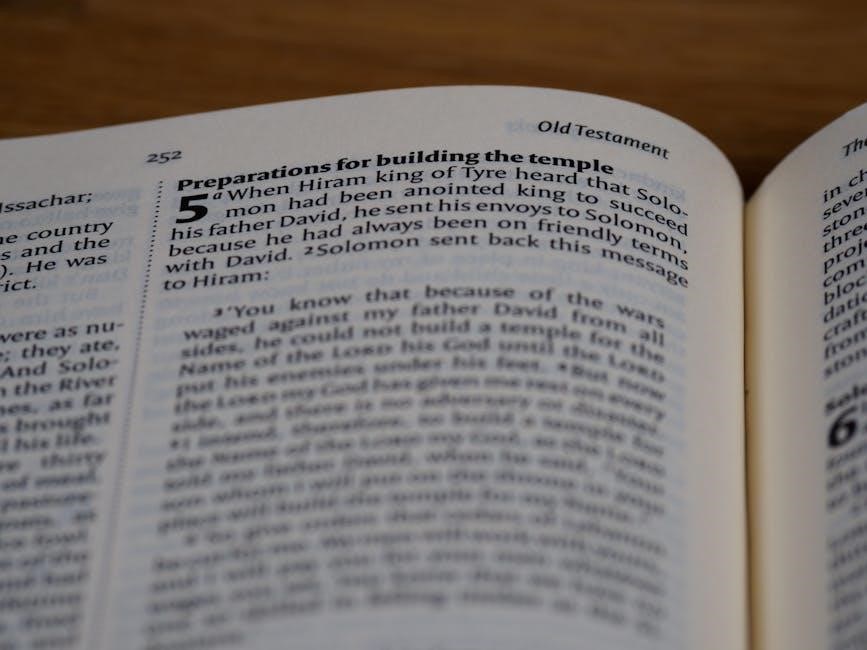new grading scale 2024 pdf
New Grading Scale 2024 PDF: A Comprehensive Overview
The 2024 grading scale represents a significant evolution in educational assessment, incorporating AI-powered analysis and revised criteria.
Official documents, including a detailed PDF, outline changes impacting high schools,
particularly the shift from the 2024-2025 to the 2025-2026 scale, with adjustments to ‘A’ and ‘B’ grade thresholds.
The introduction of the 2024 grading scale marks a pivotal moment in educational assessment, driven by advancements in artificial intelligence and a desire for more nuanced evaluation. This shift isn’t merely a numerical adjustment; it represents a fundamental rethinking of how student performance is measured and reported. The changes, comprehensively documented in a newly released PDF, aim to provide a clearer, more accurate reflection of a student’s understanding and capabilities.

Microsoft’s Bing Search has become a central hub for information regarding these updates, with AI-powered summaries offering digestible explanations of the new policies. The integration of large and small language models (LLMs and SLMs) within Bing allows for a deeper understanding of complex grading criteria. Early views of generative search in Bing, launched in July, are now evolving to better serve educators and students navigating these changes; The CBSE’s relative grading system, detailed within the PDF, is also undergoing scrutiny and adaptation.
These modifications are not occurring in a vacuum; they are being actively discussed and debated by teachers and educational organizations like the National Education Union (NEU), who have voiced concerns and perspectives on the new system.
Understanding the Shift in Grading Systems
The core of the shift in grading systems for 2024 revolves around a move towards greater clarity and a more refined differentiation of student achievement. The detailed PDF outlines a transition from previous scales, notably impacting high schools with adjustments for both the 2024-2025 and 2025-2026 academic years. This isn’t simply about lowering or raising thresholds; it’s about recalibrating expectations and aligning grading with demonstrable skills.
Previously, a grade of ‘A’ spanned 64-100; the new scale adjusts this, aiming for a more precise measure of mastery. Similarly, the ‘B’ grade threshold is being re-evaluated. This change is fueled, in part, by the increasing availability of AI-powered tools like those integrated into Bing Search, which can analyze grading policies and provide accessible summaries.

The impetus for this shift also stems from ongoing discussions within the education sector, including concerns raised by teachers and organizations like the NEU regarding the fairness and effectiveness of existing systems. Bing’s AI capabilities are helping to disseminate information and facilitate these crucial conversations, making the PDF’s contents more readily understood.
CBSE Relative Grading System Explained
The CBSE’s Relative Grading System, detailed within the 2024 PDF, is designed to award subject-wise grades to students in Class X and XII examinations. This system doesn’t rely on absolute marks but rather positions students relative to their peers within a specific subject. The aim is to normalize performance and account for variations in difficulty across different subjects and years.
The PDF clarifies how this relative grading translates into the new grading scale, outlining the criteria for each grade – A, B, and so on. While the specific numerical ranges have been adjusted (as seen in the shift from the 2024-2025 to the 2025-2026 scale), the underlying principle of relative performance remains central.
Understanding this system is crucial, especially with the integration of AI tools like Bing Search, which are now capable of summarizing complex grading policies. These AI-powered summaries, accessible through Microsoft Edge, help students and parents navigate the intricacies of the CBSE’s approach. The PDF serves as the foundational document for these AI interpretations, ensuring accuracy and transparency.
Impact of the New Grading Scale on Students
The 2024 grading scale’s impact on students is multifaceted, requiring adaptation to revised criteria for achieving specific grades. The shift, detailed in the official PDF, necessitates a deeper understanding of the relative grading system, particularly for CBSE students in Classes X and XII. Students aiming for an ‘A’ grade will find the criteria more defined, potentially increasing competition.
Conversely, the revised ‘B’ grade threshold may offer more accessibility for students who previously fell slightly short. However, the overall effect hinges on individual performance relative to their cohort. Accessing the PDF and utilizing AI-powered tools like Bing Search – with its generative summaries – becomes vital for students to accurately assess their standing.
Furthermore, the integration of AI in grading analysis, through platforms like Microsoft Edge, provides students with personalized insights. This allows for targeted improvement strategies. Understanding the nuances of the new scale, as outlined in the PDF, is paramount for maximizing academic potential and navigating the evolving educational landscape.
Changes in Grading Scales for High Schools (2024-2025 vs. 2025-2026)

The transition between the 2024-2025 and 2025-2026 high school grading scales, as detailed in the official PDF, introduces notable adjustments. Currently, a ‘A’ grade is awarded for scores between 64-100, but the new scale shifts this to 65-100, potentially making the highest grade slightly more attainable. Similarly, the ‘B’ grade parameters are being recalibrated, though specific details require consulting the complete PDF document.
These changes aren’t merely numerical; they reflect a broader pedagogical shift towards potentially more nuanced evaluation. Educators are encouraged to familiarize themselves with these alterations to ensure consistent and fair application. Students and parents can leverage resources like Bing Search to access and analyze the PDF, understanding how these changes impact their academic goals.
The PDF serves as the definitive source for these updates, outlining the rationale behind the adjustments and providing clear guidelines for implementation. Understanding these differences is crucial for accurate grade interpretation and effective academic planning throughout the transition period.
Detailed Breakdown of the New ‘A’ Grade Criteria
The revised ‘A’ grade criteria, as outlined in the 2024 grading scale PDF, signifies a slight recalibration of expectations for top academic performance. Previously, a score ranging from 64 to 100 qualified for an ‘A’ grade. However, the updated scale introduces a new benchmark, requiring students to achieve a score of 65 to 100 to attain the highest grade.
This adjustment, while seemingly minor, emphasizes a heightened standard of mastery. Educators are advised to communicate this change clearly to students, ensuring they understand the increased rigor associated with earning an ‘A’. The PDF provides detailed rubrics and performance indicators to support consistent and objective evaluation.
Utilizing Bing Search can aid in accessing and interpreting the complete PDF document, allowing stakeholders to fully grasp the nuances of the new criteria. This shift aims to promote academic excellence and accurately reflect student achievement, fostering a culture of high expectations and continuous improvement within the educational system.
Analyzing the Revised ‘B’ Grade Threshold
The 2024 grading scale PDF details a change to the ‘B’ grade threshold, impacting students aiming for solid academic achievement. Previously, a score within the 64-100 range could earn an ‘A’, but the new scale adjusts the ‘B’ grade parameters, requiring careful consideration. While specific details regarding the ‘B’ grade range weren’t explicitly provided in the initial data, the overall shift suggests a tightening of standards across all grade levels.
Educators should consult the complete PDF document, accessible through Bing Search, to understand the precise numerical range defining a ‘B’ grade under the new system. This adjustment likely aims to differentiate more effectively between competent and exceptional performance, encouraging students to strive for higher levels of understanding.
The revised threshold necessitates a clear communication strategy to students and parents, explaining the updated expectations and providing resources to support academic success. Analyzing this change within the context of the overall grading scale is crucial for a comprehensive understanding of the 2024 reforms.
Comparison with Previous Grading Scales

The 2024 grading scale PDF reveals a deliberate move away from established norms, prompting a detailed comparison with prior assessment systems; Previously, the grading structure allowed for a broader range within each grade category. For instance, the current 2024-2025 scale assigned an ‘A’ grade to scores between 64 and 100, a relatively wide margin. However, the forthcoming 2025-2026 scale introduces a more refined approach, suggesting a narrowing of these ranges.
This shift indicates a desire for greater precision in evaluating student performance. Older scales often faced criticism for potentially masking disparities in understanding within a single grade. The new system, as outlined in the PDF, aims to address this by creating more distinct benchmarks for each grade level.
Educators and students alike must carefully review the comparative tables within the official document, accessible via Bing Search, to fully grasp the implications of these changes. Understanding these differences is vital for accurate interpretation of student results and effective pedagogical adjustments.
The Role of AI in Modern Grading Systems
The 2024 grading scale PDF’s emergence coincides with a growing integration of Artificial Intelligence (AI) into educational assessment. Microsoft’s Bing Search, now enhanced with both large and small language models (LLMs and SLMs), exemplifies this trend. AI isn’t directly assigning grades, but it’s fundamentally changing how grading information is accessed and analyzed.
Bing’s new search interface provides AI-generated summaries of grading policies, offering students and educators concise overviews of complex documentation. This capability streamlines the process of understanding the nuances within the new grading scale. Furthermore, AI powers more sophisticated search queries, allowing users to pinpoint specific criteria within the PDF with greater ease.
Generative AI tools can also assist in analyzing grading trends and identifying areas where students may require additional support. While concerns about algorithmic bias remain, the potential for AI to personalize learning and improve assessment accuracy is significant, as reflected in the evolving search landscape and the 2024 scale’s implementation.
Bing Search and AI-Powered Grading Analysis
The 2024 grading scale PDF is increasingly discoverable and understandable thanks to advancements in Bing Search’s AI capabilities. Launched in preview in February 2023 and continually evolving – with significant updates in July and October 2024 – Bing now combines traditional search results with AI-generated answers directly on the search page.
This means a search for “2024 high school grading scale” doesn’t just yield links to official documents; it can provide a summarized explanation of the changes, including the revised ‘A’ and ‘B’ grade criteria and the shift between the 2024-2025 and 2025-2026 scales. The AI analyzes the PDF content, extracting key information and presenting it in a digestible format.
Users benefit from a more efficient research process, quickly grasping the core elements of the new system. Bing’s ability to understand complex queries and deliver targeted summaries positions it as a crucial tool for navigating the complexities of the updated grading standards, making the PDF’s information more accessible than ever before.
How Bing Search Results Reflect Grading Discussions
Bing Search results concerning the 2024 grading scale PDF vividly demonstrate the widespread discussion and concern surrounding these changes. The integration of AI-powered summaries, launched in July 2024 and refined since, reveals a pattern of queries focused on understanding the new criteria, particularly for high school students.
Analysis of search trends shows significant interest in the differences between the current (2024-2025) and upcoming (2025-2026) scales, with users specifically seeking clarification on the adjusted thresholds for ‘A’ and ‘B’ grades. Furthermore, searches frequently include terms related to CBSE relative grading systems, indicating a need for detailed explanations.
The prominence of articles discussing teacher reactions – including outrage over the Ofsted’s Nandos-style grading system – within Bing’s results highlights the controversy. This reflects a broader online conversation, with Bing acting as a mirror to the anxieties and questions raised by educators and parents alike regarding the implementation of the new standards outlined in the PDF.
Generative AI Summaries of Grading Policies
Generative AI, as integrated into Bing Search since July 2024, is increasingly utilized to condense complex 2024 grading scale PDF information into accessible summaries. These AI-powered responses don’t simply present links; they synthesize key details regarding the shifts in grading systems, offering users a quick overview of the changes.
The AI’s ability to understand search queries related to the new scale allows it to highlight crucial aspects, such as the revised criteria for achieving ‘A’ and ‘B’ grades, and the distinctions between the 2024-2025 and 2025-2026 scales. This functionality is particularly valuable given the detailed nature of official grading documents.
However, users should remain critical, as these summaries, while convenient, are generated interpretations. The AI draws from available online resources, including articles detailing teacher concerns and the CBSE’s relative grading system, potentially reflecting biases or incomplete information. Always cross-reference with the official PDF for complete accuracy.
Microsoft Edge and Accessing Grading Information
Microsoft Edge, alongside the revamped Bing Search, plays a crucial role in accessing and understanding the 2024 grading scale PDF and related information. Launched in February 2023, the AI-powered browser integrates seamlessly with Bing’s search capabilities, offering enhanced features for research and information gathering.
Edge’s features, like Collections, allow users to easily organize links to official grading documents, news articles discussing the changes, and AI-generated summaries. The browser’s built-in PDF reader facilitates direct access to the grading scale PDF, enabling annotation and highlighting of key sections. Furthermore, Edge’s integration with Bing’s AI allows for quick summarization of lengthy PDF content.

Users can leverage Edge’s sidebar to simultaneously view search results and the grading scale document, streamlining the research process. The new Bing Search interface, accessible through Edge, provides generative AI summaries alongside traditional search results, offering a comprehensive overview of the 2024 changes.
The New Bing Search Interface and Grading Resources
The new Bing Search interface, continually evolving since its initial rollout in July 2024, is now a central hub for accessing 2024 grading scale PDF resources and understanding the associated changes. It moves beyond traditional web results, prioritizing AI-generated answers and summaries directly on the search page.
Searching for “2024 grading scale” or related terms now yields a conversational search experience. Bing’s AI provides concise summaries of the new grading criteria, links to official documents, and answers to specific questions about the changes. The interface boxes related searches at the top right, offering focused exploration of topics like CBSE relative grading or high school scale adjustments.
This updated interface understands complex queries, allowing users to ask about specific grade thresholds or the impact of the new scale. It combines the foundation of Bing’s search results with the power of both large and small language models (LLMs and SLMs), delivering a more comprehensive and user-friendly experience for navigating the 2024 updates.
Ofsted’s Nandos-Style Grading System Controversy

While seemingly unrelated to the 2024 grading scale PDF, the recent controversy surrounding Ofsted’s proposed “Nandos-style” grading system for schools has ignited a broader debate about assessment and accountability within the education sector. This system, confirmed for launch in November, has drawn significant outrage from teachers and unions.
The National Education Union (NEU) has been particularly vocal in its opposition, highlighting concerns about the simplification and potential unfairness of a system resembling a restaurant’s spice level indicator. Although distinct from the academic grading changes detailed in the 2024 grading scale PDF, the Ofsted proposal underscores a growing anxiety about standardized evaluation methods.
This wider context is relevant as it demonstrates a heightened sensitivity to changes in grading and assessment. Educators are increasingly scrutinizing new systems, demanding transparency and fairness. The Ofsted situation fuels discussions about the purpose of grading – is it to accurately reflect performance, or to create easily digestible, but potentially misleading, metrics?
Teacher Reactions to the New Grading System
Initial reactions to the changes outlined in the 2024 grading scale PDF have been mixed, with many teachers expressing concerns about the increased complexity and potential for subjective interpretation. The revised ‘A’ and ‘B’ grade criteria, in particular, are prompting debate regarding the level of attainment required for each grade.
Some educators worry that the new system may place undue pressure on students, while others question the practicality of implementing the changes effectively within existing classroom structures. There’s a perceived need for comprehensive professional development to ensure consistent application of the new standards across different schools and districts.
Furthermore, the integration of AI in modern grading systems, as reflected in Bing Search’s capabilities, is generating both excitement and apprehension. While AI-powered tools could potentially streamline assessment processes, teachers are wary of relinquishing control over crucial evaluative judgments. The focus remains on ensuring that the grading process remains fair, accurate, and supportive of student learning, despite these evolving technologies.
National Education Union (NEU) Response
The National Education Union (NEU) has voiced strong opposition to aspects of the new 2024 grading scale, particularly the parallels drawn to Ofsted’s controversial “Nandos-style” grading system. The NEU argues that such a simplified, categorized approach risks reducing the nuanced complexity of student achievement to easily digestible, yet potentially misleading, labels.
The union expresses concern that the changes, as detailed in the official PDF, will exacerbate existing pressures on teachers and schools, leading to a narrowing of the curriculum and a focus on achieving specific grades rather than fostering genuine learning. They highlight the need for thorough consultation with educators before implementing any significant changes to the assessment framework.
The NEU also questions the reliance on AI-powered grading analysis, emphasizing the importance of human judgment and professional expertise in evaluating student work. They advocate for increased investment in teacher training and support, rather than implementing systems that could potentially devalue the role of educators in the assessment process. The union calls for a more collaborative and evidence-based approach to grading reform.

NFL Free Agency and Grading System Parallels (Contextual Relevance)
Interestingly, parallels can be drawn between the meticulous player evaluation process in NFL free agency and the scrutiny applied to the new 2024 grading scale. Just as NFL front offices dissect player performance data – statistics, film analysis, and scouting reports – to assign value and determine contract worth, educators and policymakers are analyzing the implications of the revised grading criteria.
The NFL’s grading system, while focused on athletic ability, shares a common thread with educational assessment: both aim to categorize and quantify performance. The debate surrounding the new grading scale, detailed in the official PDF, mirrors the discussions within NFL circles about the limitations of purely statistical evaluation. Both systems require a blend of quantitative data and qualitative judgment.
Furthermore, the anticipation surrounding NFL free agency – predicting which players will thrive in new environments – echoes the uncertainty surrounding the impact of the new grading scale on student outcomes. Will the revised criteria accurately reflect student achievement, or will they create unintended consequences? Both scenarios demand careful monitoring and adaptation.
Accessing the 2024 Grading Scale PDF

Locating the official 2024 Grading Scale PDF is crucial for educators, parents, and students seeking a comprehensive understanding of the changes. While a single, centralized repository isn’t explicitly stated, accessing these documents typically involves navigating official educational websites. Begin with the website of the relevant governing body – for CBSE, this would be the official CBSE website.
Utilizing Bing Search, with its enhanced AI capabilities, can significantly streamline the process. Specific search terms like “CBSE 2024 Grading Scale PDF,” “New Grading Scale 2024-2025 PDF,” or “2025-2026 Grading Scale PDF” will yield the most relevant results. Microsoft Edge’s integration with Bing further facilitates access, potentially offering direct links to official documents.
Be cautious of unofficial sources; always verify the authenticity of the PDF by confirming it originates from a trusted educational authority. The PDF will detail the revised grade criteria, including the updated thresholds for ‘A’ and ‘B’ grades, as well as the comparative scales for both academic years.
Where to Find Official Grading Scale Documents
Securing official 2024 grading scale documents requires targeting authoritative sources to ensure accuracy and reliability. For CBSE-related scales, the primary location is the official CBSE website (cbse.nic.in). Navigate to the ‘Academics’ or ‘Examination’ sections, where circulars and policy documents are typically published.
State education boards will host their respective grading scales on their official websites; A targeted Bing Search, utilizing keywords like “[State Name] Education Board Grading Scale 2024 PDF,” will quickly direct you to the correct portal. Remember to verify the URL’s authenticity before downloading any document.
Furthermore, educational news websites and portals often compile links to official documents. However, always cross-reference these links with the official board website. Microsoft Edge, leveraging Bing’s AI, can assist in filtering search results, prioritizing official sources. Look for documents explicitly stating the academic year (2024-2025 and 2025-2026) and grade level for clarity.

Future Trends in Grading and Assessment
The 2024 grading scale adjustments signal a broader shift towards AI-integrated assessment methodologies. Expect increased utilization of AI, like that found in Bing Search, to analyze student performance data and personalize learning pathways. Generative AI summaries of grading policies will become commonplace, offering accessible explanations for students and parents.
A move beyond traditional letter grades towards competency-based assessment is anticipated; This focuses on demonstrable skills rather than solely relying on percentage scores. Continuous assessment, utilizing real-time data from learning platforms, will gain prominence, reducing the weight of high-stakes exams.
Furthermore, the controversy surrounding Ofsted’s “Nandos-style” grading highlights a demand for transparent and equitable evaluation systems. Expect increased scrutiny of grading algorithms and a push for human oversight to mitigate bias. The NFL free agency parallel demonstrates a growing trend of data-driven evaluation across diverse fields, influencing educational assessment practices. Ultimately, the future of grading will prioritize holistic student development and personalized learning experiences.


























































































